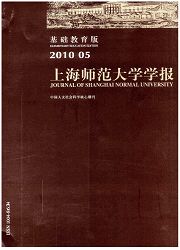

 中文摘要:
中文摘要:
根据认知理论和递差原则,集合量词内部成员存在着地位的差异。根据属性原则、频率原则和搭配原则,“对、组”等集合量词可以被确定为典型集合量词,“刀、堂”等集合量词可以被确定为非典型集合量词,“打、段、片”等则是中间状态的集合量词,它们形成了一个连续统。对集合量词典型性问题进行考察,既有理论意义,也有实用价值。
 英文摘要:
英文摘要:
According to the cognitive theory and gradient principle, there are some differences in status between members of collective measure words. According to the attribute principle, frequency principle and collocation principle, the typical collective measure words in Chinese include "dui(对) , zu(组) ", etc. , the untypical collective measure words comprise "dao( 刀 ) , tang(堂) ", etc. , and others like "da(打) , duan(段) , pian(片) " are central collective measure words. They all form a continuous system. To study the typical question of collective measure words is of both theoretical significance and practical value.
 同期刊论文项目
同期刊论文项目
 同项目期刊论文
同项目期刊论文
 期刊信息
期刊信息
